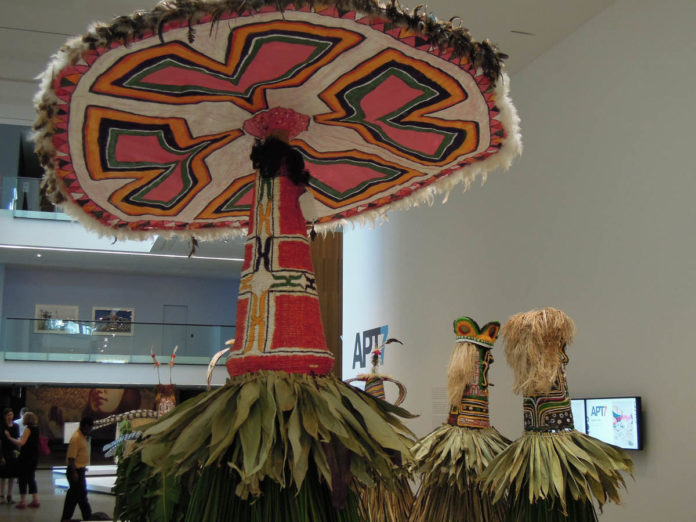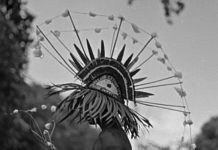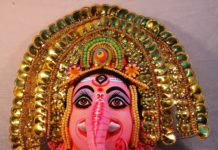Throughout Melanesia, totems and special characters from ancestor stories or legends are materialised for ceremonies and festivals by specially prepared, initiated people wearing masks and costumes. The variety of forms, shapes, sizes and complexity is vast. Considering elaborate face and body painting done in many societies, the range of cultural expression is extremely rich. And, as collected from the 2011 National Mask Festival in Kokopo, it still is.
In Papua New Guinea and neighbouring Indonesian West Papua, men carve masks out of wood or form them from cane. Over-moulding using tapa (tree bark cloth) or clay is also done. Fibre threads, painted embellishment, and ornaments or symbolic objects are sometime incorporated.
___________________________________
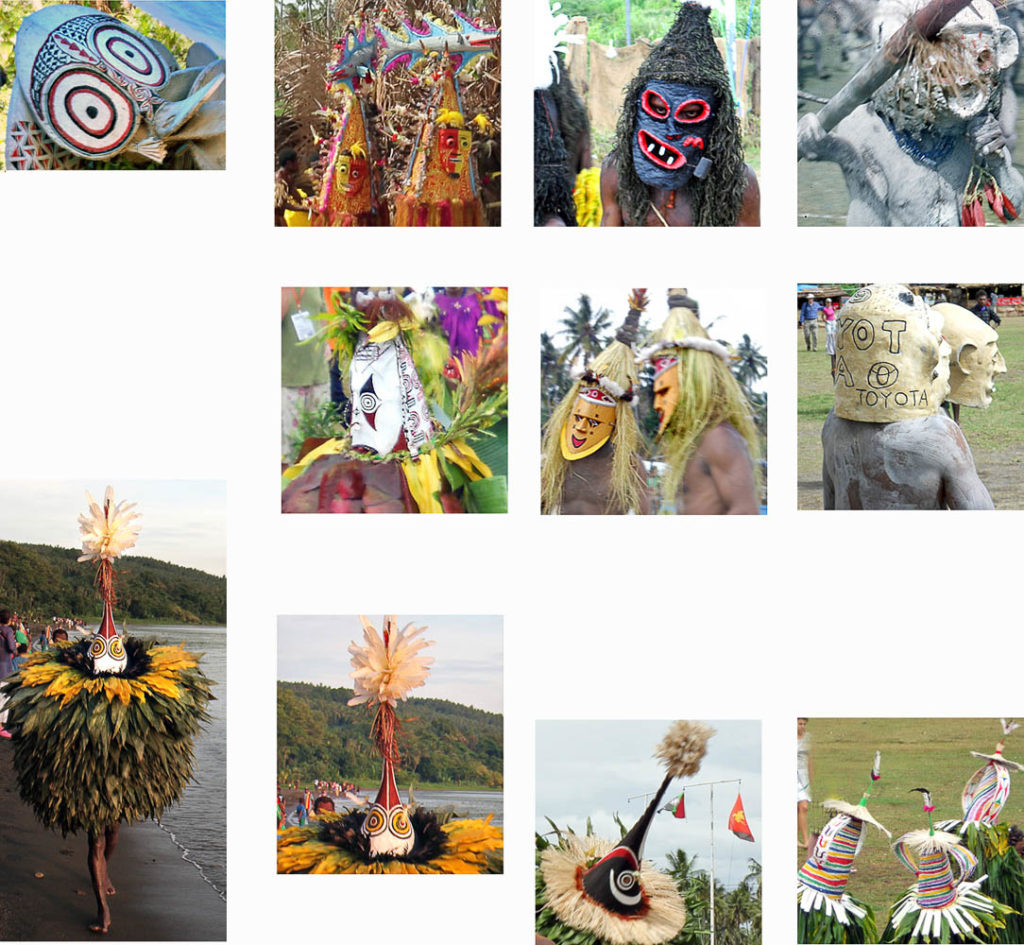
ABELAM MASKS
ABELAM ‘Bapa’ masks being danced at Brikiti village, near Maprik,
East Sepik Province. August 2013. (15)
From the large range of Melanesian mask traditions that existed across PNG only some continue today. Versions of bapa (Abelam East Sepik name) type masks, with local variations, occurred widely on New Guinea including in the Papuan Gulf and in East New Britain.
Abelam bapa masks are a prime example of vibrant and public continuity, the objects being very similar to those seen in early photographs or held in museum collections. Made mostly of fine woven cane, they are painted with ochre pigments. The full costume includes leaves, fibre from palm fronds and decorative fruits. Bapa’s crossed sticks are used as threatening spears. These figures in their many guises were and are crowd controllers and scary clowns.
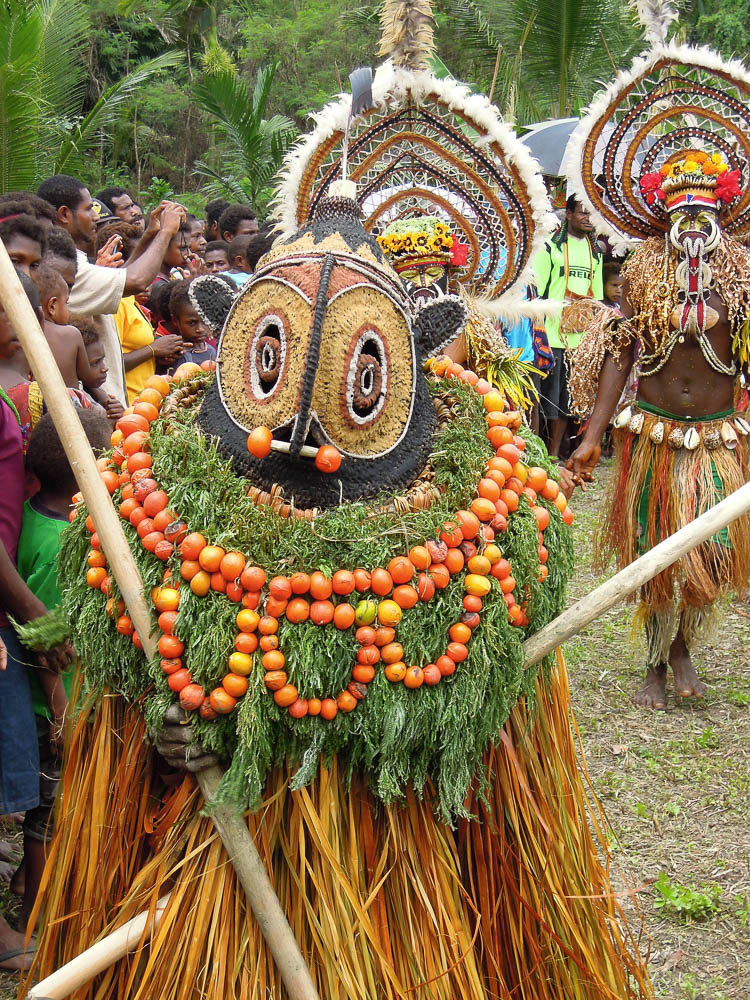
Behind bapa in the photo are complex male initiation masks. Such “spirit” masks are made in secret, and kept wrapped and hidden when not in use. Cultural traditions continue, or are being revived, among the Abelam and their Wosera and Arapesh neighbours. Such objects today are very similar to those seen in early photographs or held in museums, and some private collections overseas and in PNG.
Bapa masks are quite common. Smaller versions are often sold to tourists. A wide range of shapes and sizes of other finely woven cane masks and dancing accessories are made. Some are austere and unpainted. Others get embellished, sometimes with such things as shells, pig tusks and feathers.


